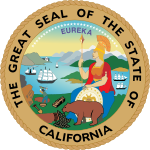
Back Proposition 13 Esperanto Proposition 13 French 캘리포니아 주민발의 13 (1978년) Korean Proposition 13 Swedish
| Elections in California |
|---|
 |
| This article is part of a series on |
| Taxation in the United States |
|---|
 |
|
|
Proposition 13 (officially named the People's Initiative to Limit Property Taxation) is an amendment of the Constitution of California enacted during 1978, by means of the initiative process, to cap property taxes and limit property reassessments to when the property changes ownership, as well as require a 2/3 majority for tax increases in the state legislature. The initiative was approved by California voters in a primary election on June 6, 1978 by a nearly two to one margin. It was upheld by the Supreme Court in 1992 in Nordlinger v. Hahn, 505 U.S. 1 (1992). Proposition 13 is embodied in Article XIII A of the Constitution of the State of California.[1]
The proposition decreased property taxes by assessing values at their 1976 value, limiting the rate of taxation to 1% of the assessed value, and restricted annual increases of assessed value to an inflation factor, not to exceed 2% per year. It prohibits reassessment of a new base year value except in cases of (a) change in ownership, or (b) completion of new construction. These rules apply equally to all real estate, residential and commercial—whether owned by individuals or corporations.
Significantly, the initiative also requires a two-thirds majority in both legislative houses for future increases of any state tax rates or amounts of revenue collected, including income tax rates. It also requires a two-thirds majority in local elections for local governments wishing to increase special taxes. (A "special tax" is a tax devoted specifically to a purpose: e.g. homelessness or road repair; money that does not go into a general fund.)
Proposition 13 has been described as California's most famous and influential ballot measure;[2] it received enormous publicity throughout the United States.[3] Passage of the initiative presaged a "taxpayer revolt" throughout the country that is sometimes thought to have contributed to the election of Ronald Reagan to the presidency during 1980. Of 30 anti-tax ballot measures that year, 13 passed.[4] The proposition has been called the "third rail" (meaning "untouchable subject") of California politics, and it has generally been unpopular for lawmakers to attempt to change it.[5]
As a consequence of Proposition 13, homeowners in California receive a property subsidy that increases the longer that they own their home. It has been described as a contributor to California's housing crisis, as its acquisition value system (where the assessed value of property is based on the date of its acquisition rather than current market value) incentivizes long-time homeowners to hold onto their properties rather than downsize, reducing the housing supply and raising housing prices.[6]: 4
- ^ "Codes Display Text". leginfo.legislature.ca.gov.
- ^ "As Prop. 13 Turns 40, Californians Rethink Its Future". Governing. February 23, 2018.
- ^ Tugend, Alina (May 7, 2006). "The Least Affordable Place to Live? Try Salinas". New York Times. Retrieved April 28, 2010.
- ^ "Who's Afraid of the Big Bad Initiative?". Hoover Institute. Archived from the original on 2008-07-19. Retrieved 2007-06-24.
- ^ "An experienced Jerry Brown vows to build on what he's already done". Los Angeles Times. October 19, 2014. Retrieved October 21, 2014.
- ^ Cite error: The named reference
Lock-in_effectwas invoked but never defined (see the help page).
© MMXXIII Rich X Search. We shall prevail. All rights reserved. Rich X Search